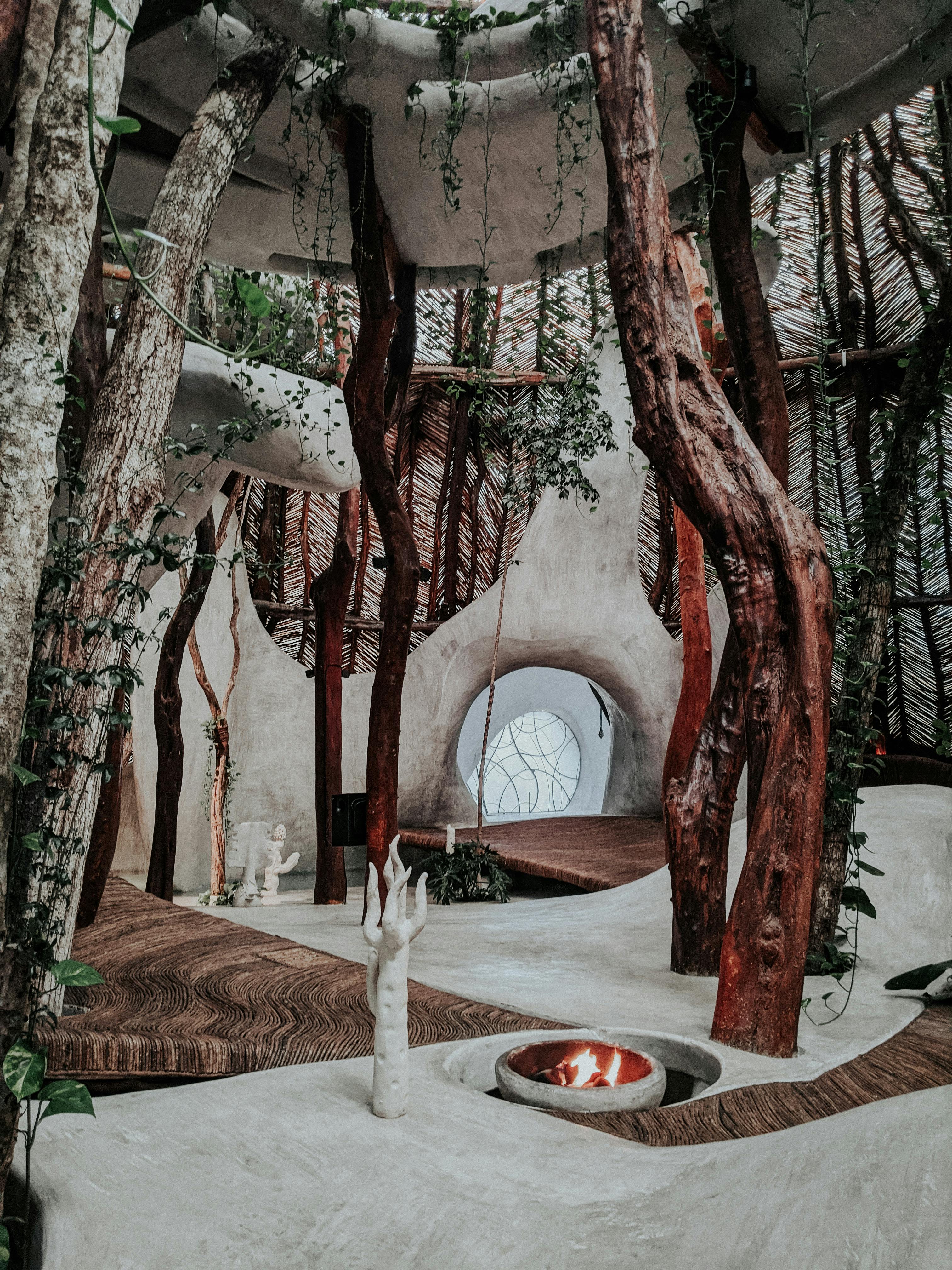Biophilic Design: Integrating Nature for Optimal Health and Wellness
Imagine walking into a room filled with lush greenery, natural light streaming through large windows, and the soothing sound of a water feature. How does it make you feel? Calm? Energized? Connected to nature? This is the power of biophilic design, a revolutionary approach to creating spaces that nurture our innate connection with nature. But how exactly does this design philosophy impact our health and well-being?

The Origins and Evolution of Biophilic Design
Biophilic design is rooted in the concept of biophilia, a term coined by psychoanalyst Erich Fromm in 1973 and later popularized by biologist Edward O. Wilson. Biophilia refers to humans’ innate affinity for nature and other living systems. This evolutionary connection to nature has been crucial for our survival and well-being throughout history.
As urbanization accelerated in the 20th century, our connection to nature diminished, leading to various health issues. In response, architects and designers began exploring ways to bring nature back into our built environments. The term biophilic design was first introduced in the 1980s, but it gained significant traction in the early 2000s as research began to demonstrate its tangible benefits on human health and productivity.
The Science Behind Biophilic Design
Numerous studies have shown that exposure to nature and natural elements can have profound effects on our health. Biophilic design leverages these findings to create spaces that promote well-being. Research has demonstrated that incorporating natural elements in our environment can:
-
Reduce stress and anxiety
-
Improve cognitive function and creativity
-
Enhance mood and overall psychological well-being
-
Boost immune function
-
Accelerate healing in healthcare settings
-
Increase productivity in workplace environments
These benefits are attributed to various factors, including improved air quality, exposure to natural light, and the psychological impact of being connected to nature. The field of environmental psychology has been instrumental in understanding how our surroundings affect our mental states and behaviors.
Key Elements of Biophilic Design
Biophilic design incorporates several key elements to create spaces that mimic natural environments:
-
Direct nature experiences: This includes incorporating living plants, water features, and natural light into indoor spaces.
-
Indirect nature experiences: Using natural materials, colors, and textures that evoke nature, such as wood, stone, and earth tones.
-
Space and place conditions: Creating spaces that mimic natural environments, such as open floor plans that allow for movement and exploration.
-
Natural patterns and processes: Incorporating designs that reflect natural forms and rhythms, such as fractals and biomimicry.
-
Light and space: Maximizing natural light and creating dynamic and diffuse light conditions that change throughout the day.
-
Human-nature relationships: Fostering a sense of prospect and refuge, mystery and risk, and other spatial relationships that we experience in nature.
Implementing Biophilic Design in Various Settings
Biophilic design principles can be applied to a wide range of settings, each with unique considerations and benefits:
-
Healthcare Facilities: Hospitals and clinics incorporating biophilic design have reported reduced patient stress, faster recovery times, and improved staff well-being. Features like healing gardens, nature views from patient rooms, and natural materials in waiting areas can significantly enhance the healing environment.
-
Workplace Environments: Offices with biophilic elements have shown increased productivity, creativity, and employee satisfaction. Green walls, outdoor workspaces, and nature-inspired art are becoming increasingly common in modern office designs.
-
Educational Institutions: Schools incorporating natural elements have reported improved student performance, increased attention spans, and reduced stress levels. Outdoor classrooms, natural play areas, and indoor plants are some ways to implement biophilic design in educational settings.
-
Residential Spaces: Homes designed with biophilic principles can promote relaxation, improve sleep quality, and enhance overall well-being. This can include features like indoor gardens, natural ventilation systems, and the use of natural materials and textures.
Challenges and Future Directions
While the benefits of biophilic design are clear, there are challenges to its widespread implementation. These include:
-
Cost considerations: Some biophilic design elements can be expensive to install and maintain.
-
Lack of awareness: Many decision-makers are still unfamiliar with the concept and its benefits.
-
Technical challenges: Integrating natural elements into existing buildings can be complex.
-
Standardization: There is a need for more standardized metrics to measure the effectiveness of biophilic design.
Despite these challenges, the future of biophilic design looks promising. As awareness grows and technology advances, we can expect to see more innovative solutions that make biophilic design more accessible and effective.
Biophilic Design: Practical Tips for Everyday Spaces
-
Incorporate indoor plants to improve air quality and create a connection to nature
-
Maximize natural light by keeping windows unobstructed and using light-colored walls
-
Use natural materials like wood and stone in furniture and decor
-
Install a small water feature to introduce soothing sounds
-
Incorporate nature-inspired artwork and patterns in textiles and wall coverings
-
Create a view to the outdoors, even if it’s just a small garden or green space
-
Use dynamic and diffuse lighting to mimic natural light patterns
-
Introduce natural scents like essential oils to stimulate the senses
As we continue to navigate the challenges of modern life, biophilic design offers a powerful tool to reconnect with nature and enhance our overall health and well-being. By thoughtfully integrating natural elements into our built environments, we can create spaces that not only look beautiful but also nurture our physical and mental health. As research in this field progresses, we can look forward to increasingly sophisticated and effective biophilic design solutions that will transform the way we live, work, and heal.





